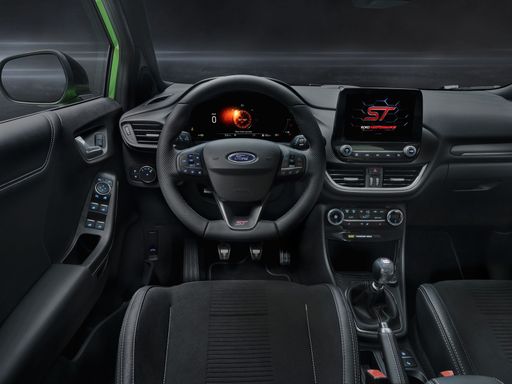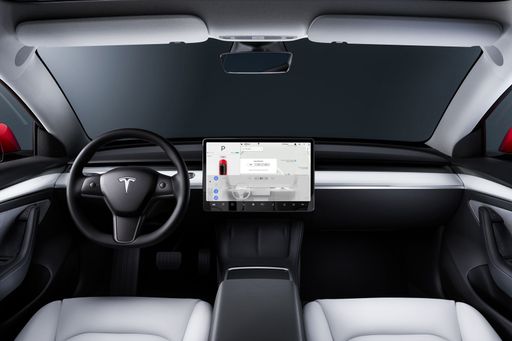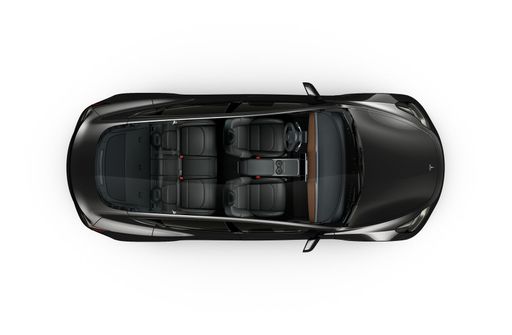Ford Puma vs Tesla Model 3 – Which one offers the better deal?
Two cars, one duel: Ford Puma meets Tesla Model 3.
Which one wins in performance, efficiency and value for money? Find out now!
Costs and Efficiency:
Looking at overall running costs, both models reveal some interesting differences in everyday economy.
Ford Puma has a clearly perceptible advantage in terms of price – it starts at 24800 £, while the Tesla Model 3 costs 34300 £. That’s a price difference of around 9506 £.
In terms of energy consumption, the advantage goes to the Ford Puma: with 13.10 kWh per 100 km, it’s hardly perceptible more efficient than the Tesla Model 3 with 13.20 kWh. That’s a difference of about 0.10 kWh.
As for range, the Tesla Model 3 performs convincingly better – achieving up to 702 km, about 326 km more than the Ford Puma.
Engine and Performance:
Under the bonnet, it becomes clear which model is tuned for sportiness and which one takes the lead when you hit the accelerator.
When it comes to engine power, the Tesla Model 3 has a clearly edge – offering 460 HP compared to 168 HP. That’s roughly 292 HP more horsepower.
In acceleration from 0 to 100 km/h, the Tesla Model 3 is clearly quicker – completing the sprint in 3.10 s, while the Ford Puma takes 7.40 s. That’s about 4.30 s faster.
In terms of top speed, the Tesla Model 3 performs somewhat better – reaching 262 km/h, while the Ford Puma tops out at 210 km/h. The difference is around 52 km/h.
There’s also a difference in torque: Tesla Model 3 pulls significantly stronger with 660 Nm compared to 290 Nm. That’s about 370 Nm difference.
Space and Everyday Use:
Cabin size, boot volume and payload all play a role in everyday practicality. Here, comfort and flexibility make the difference.
Both vehicles offer seating for 5 people.
In curb weight, Ford Puma is noticeable lighter – 1316 kg compared to 1822 kg. The difference is around 506 kg.
In terms of boot space, the Tesla Model 3 offers a bit more room – 594 L compared to 523 L. That’s a difference of about 71 L.
When it comes to payload, Ford Puma distinct takes the win – 469 kg compared to 333 kg. That’s a difference of about 136 kg.
Who comes out on top?
Overall, the Tesla Model 3 shows itself to be outperforms in nearly all aspects and secures the title of DriveDuel Champion.
It convinces with the more balanced overall package and proves to be the more versatile choice for everyday use.

Tesla Model 3
Ford Puma
The Ford Puma presents itself as a stylish compact SUV with a distinctive design that combines practicality with a dynamic driving experience. Its sleek lines and sporty aesthetics make it stand out on the road, while the interior offers a comfortable and tech-savvy environment. With an emphasis on efficiency and a smooth drive, the Ford Puma is well-suited for both urban commutes and countryside adventures.
details @ puma.fordpresskits.com
@ puma.fordpresskits.com
 @ puma.fordpresskits.com
@ puma.fordpresskits.com
 @ puma.fordpresskits.com
@ puma.fordpresskits.com
 @ puma.fordpresskits.com
@ puma.fordpresskits.com
Tesla Model 3
The Tesla Model 3 stands out in the electric vehicle market with its sleek design and impressive performance capabilities. It offers a seamless driving experience that combines advanced technology with minimalistic interiors, creating a futuristic feel on the road. Additionally, its range and charging infrastructure make it a practical choice for both city commuting and longer journeys.
details @ tesla.com
@ tesla.com
 @ tesla.com
@ tesla.com
 @ tesla.com
@ tesla.com
 @ tesla.com
@ tesla.com

|

|
|
|
|
Costs and Consumption |
|
|---|---|
|
Price
24800 - 36300 £
|
Price
34300 - 50100 £
|
|
Consumption L/100km
5.4 - 5.9 L
|
Consumption L/100km
-
|
|
Consumption kWh/100km
13.1 - 13.9 kWh
|
Consumption kWh/100km
13.2 - 16.7 kWh
|
|
Electric Range
361 - 376 km
|
Electric Range
513 - 702 km
|
|
Battery Capacity
43 kWh
|
Battery Capacity
64.5 - 79 kWh
|
|
co2
0 - 135 g/km
|
co2
0 g/km
|
|
Fuel tank capacity
42 L
|
Fuel tank capacity
-
|
Dimensions and Body |
|
|---|---|
|
Body Type
SUV
|
Body Type
Sedan, Hatchback
|
|
Seats
5
|
Seats
5
|
|
Doors
5
|
Doors
4 - 5
|
|
Curb weight
1316 - 1563 kg
|
Curb weight
1822 - 1929 kg
|
|
Trunk capacity
456 - 523 L
|
Trunk capacity
594 L
|
|
Length
4186 - 4226 mm
|
Length
4720 - 4724 mm
|
|
Width
1805 mm
|
Width
1850 mm
|
|
Height
1550 - 1555 mm
|
Height
1431 - 1440 mm
|
|
Max trunk capacity
1216 - 1283 L
|
Max trunk capacity
-
|
|
Payload
367 - 469 kg
|
Payload
303 - 333 kg
|
Engine and Performance |
|
|---|---|
|
Engine Type
Electric, Petrol MHEV
|
Engine Type
Electric
|
|
Transmission
Automatic, Manuel
|
Transmission
Automatic
|
|
Transmission Detail
Reduction Gearbox, Manual Gearbox, Dual-Clutch Automatic
|
Transmission Detail
Reduction Gearbox
|
|
Drive Type
Front-Wheel Drive
|
Drive Type
Rear-Wheel Drive, All-Wheel Drive
|
|
Power HP
125 - 168 HP
|
Power HP
283 - 460 HP
|
|
Acceleration 0-100km/h
7.4 - 9.8 s
|
Acceleration 0-100km/h
3.1 - 6.1 s
|
|
Max Speed
160 - 210 km/h
|
Max Speed
201 - 262 km/h
|
|
Torque
170 - 290 Nm
|
Torque
420 - 660 Nm
|
|
Number of Cylinders
3
|
Number of Cylinders
-
|
|
Power kW
92 - 124 kW
|
Power kW
208 - 338 kW
|
|
Engine capacity
999 cm3
|
Engine capacity
-
|
General |
|
|---|---|
|
Model Year
2025
|
Model Year
2023 - 2024
|
|
CO2 Efficiency Class
A, D
|
CO2 Efficiency Class
A
|
|
Brand
Ford
|
Brand
Tesla
|
Is the Ford Puma offered with different drivetrains?
The Ford Puma is offered with Front-Wheel Drive.
The prices and data displayed are estimates based on German list prices and may vary by country. This information is not legally binding.
